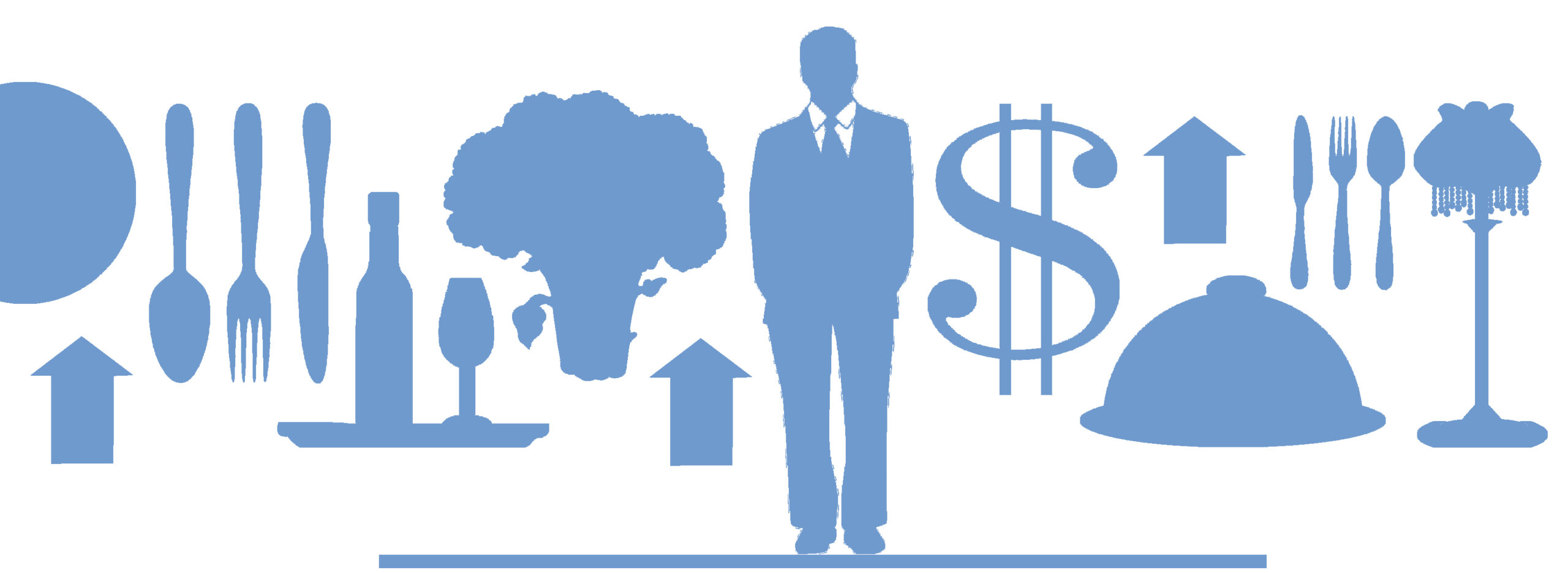It’s not uncommon for restaurants to have some kind of retail component, but in the past these retail endeavors offered products related to the restaurant, such as sauces or frozen pizzas, or items leveraging the restaurant’s name—T-shirts and mugs. Restaurants that come to mind in our marketplace are Famous Dave’s, Green Mill, Hell’s Kitchen. Major department stores, particularly in the case of Minneapolis’ Dayton’s, for years have had restaurants, and some have been institutionalized. A more recent trend, however, is for the restaurant to be part of a broader retail opportunity in order to attract retail customers.
Restoration Hardware (RH) (see pics at right) recently opened a furniture store in a shopping center in Edina with rooftop dining under the stars at night, chandeliers by day. An earlier version was opened in Chicago. For Minneapolis, they created a sophisticated and large facility, which would seem more appropriate in a downtown area, but it actually resides on the pad site of Southdale. The restaurant ‘s rooftop dining experience is aesthetically one of the coolest restaurants I’ve seen in a long time.
The theory behind this is that the overall Restoration Hardware experience should be carried from shopping to eating, and if you look at Restoration Hardware’s retail brand, a lot of it revolves around entertaining. Locating the restaurant on the top floor invites customers to go through the entire store, climb up the wide stairway to the rooftop and have a sensory shopping experience all the way up to the restaurant. Recently I talked with Bill LaVigne and Jon Oulman who are doing a project on Payne Street on the east side of St. Paul, which will combine a restaurant in a new up-and-coming area along with an art gallery, which is something their group has experience in. This will be a fast-casual restaurant connected directly to the gallery. The gallery is also going to serve as private dining space. The twist is that it’s a real gallery, not just a novelty concept for restaurant browsers, but a destination for art enthusiasts and buyers.
The entire North Loop area of Minneapolis has become a restaurant/retail center, with both concepts playing off each other. The anchor retail is Martin Patrick3, a high-end men’s and home furnishing store. In the same building is Moose and Sadie’s, with Spoon and Stable, Monte Carlo, J.D. Hoyt’s in the surrounding area. Nearby is Lululemon, located next to the millennial-centric coffee concept, Fairgrounds. Other specialty stores (no chains) are sprinkled in the mix, as well as a wine bar, taking up some of the space vacated by an optical store. Bachelor Farmer started this trend with its high-end clothing store and boutique hotel.
The Lifestyle Center in Maple Grove has been successful with both retail and restaurants—attracting multiple large chains.
Other attempts to marry the two have not done as well. The West End in St. Louis Park is one example of a destination restaurant grouping that hasn’t been able to retain retail shops—even with the help of a multi-screen movie theater and an eatertainment restaurant.
I’ve noticed that in major cities retail is moving from downtown to areas that are considered restaurant-rich. So it works both ways. The retail can attract people to the restaurants as well as the restaurants attracting people to retail. Consumers want the convenience of on-demand dining, so they can park once, shop and eat.
I asked Navin Nagrani, managing partner at Hilco Global, which has been involved with a number of retail projects, what his take on this trend was. He calls the combination of restaurants and retail a sort of business Darwinism. Survival of the fittest in the retail competition depends on using excess space for profitable means, which is why retail establishments start tying in restaurant concepts. He also noted that these concepts are tailored specifically with the store’s customers in mind. For example, in Restoration Hardware, which is trying to attract millennials, the restaurants are designed with this demographic in mind, rather than for traditional, older customers. The central idea Navin stresses is relevance: A retailer needs to ask why the retail business exists today and how incorporating a restaurant might make this existence more relevant.
I also spoke with Paige Stover, director of research and analytics at Forum Analytics. They have developed a tool called ShopoGraphics, which allows them to analyze the pattern of consumer shopping traffic in various retail areas. By mapping out consumer shopping habits and movements within a specific area, they can match the data with a type of retail—and specifically restaurants—that would best fit an area. This is a quantum leap forward from merely performing a demographic analysis of the kind of consumers that the restaurant normally attracts and then trying to match the location with the demographics surrounding the restaurant. ShopoGraphics is much more effective because it analyzes the area that already has consumer traffic.
What does all this say about the state of restaurants and financial viability? It really tells me four things.
- Restaurants need help driving revenue and one of the ways to effectively do it is to have strong retail, either as part of the restaurant, around the restaurant, or to have the restaurant in a retail spot.
- You need to satisfy the consumers’ need for convenience by combining a shopping experience with the ready availability of food on demand, very much an emerging trend.
- Retail areas are staffed by people-oriented employees, which should assist in attracting labor for the restaurant.
- Being able to have a restaurant affiliated, associated or connected with a retail location is going to lower your build-out and your overall occupancy costs.
This is definitely a new kind of marriage which is going to continue.
From the January 2020 issue of Foodservice News
Author
-

Co-founder and chairman of Monroe Moxness Berg PA, Dennis is a pioneer in corporate financing with a broad network of finance contacts and clients. He assists businesses, from emerging companies to multi-national firms, by providing creative ideas, identifying unique financing sources, and developing the financial tools necessary for their growth and development.
